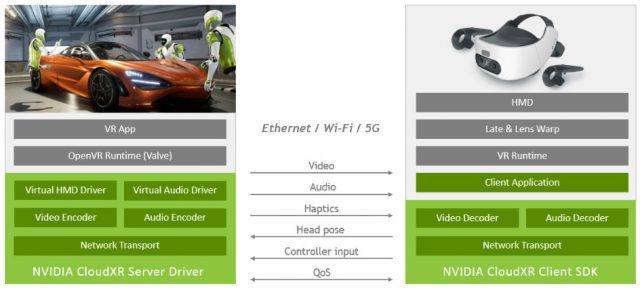NVIDIA plans to launch its CloudXR service on Amazon Web Services in early 2021, allowing enterprises to stream AR and VR content to tethered and standalone VR headsets. While the initial use-cases focus on visualization and collaboration, the same service could underpin a consumer-facing XR streaming service in the future.
This week Nvidia announced that it will make its CloudXR streaming service available via Amazon Web Services in early 2021. Nvidia says the CloudXR system can stream any OpenVR/SteamVR content to end users on Windows or Android systems without any special modification to the streamed application.

While Nvidia earlier this year released an SDK to allow companies to deploy the CloudXR service on their own servers, now the company is moving to bring a ready-made CloudXR solution to Amazon Web Services.
AWS is one of the most prevalent cloud computing platforms in the world, acting as the back-end web infrastructure for millions of customers. By offering CloudXR through AWS, Nvidia is making it easy for any company to spin up their own XR streaming solution for whatever their needs may be.
At the outset, Nvidia is pitching CloudXR for enterprise use-cases like visualization and collaboration, enabling companies to stream high-quality AR and VR content to employee’s headsets without needing to equip each user with a powerful VR-capable PC. Because the heavy-duty rendering happens in the cloud, CloudXR’s aim is to run high-fidelity VR content low-powered PCs, laptops, and even standalone headsets like Oculus Quest and Vive Focus.
Although enterprise XR applications are the initial use-case, the move also brings us one big step closer to a consumer cloud-streaming XR service. A company wanting to offer such a service to consumers could theoretically build their platform on top of CloudXR hosted on AWS.
While the idea of streaming XR content from the cloud has been around for many years now, Nvidia’s CloudXR may well be the most mature and scalable solution available to date given its compatibility with unmodified OpenVR/SteamVR content and its upcoming deployability through AWS.







